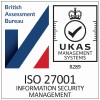A deep insight into digital claims

A closer look at digital claims and how it can help you and your policyholders
In the post COVID-19 world, Digital Transformation of claims services has moved from ‘nice to have’ to ‘must have’ off the back of fundamental shifts in customer expectations and habits – as well as extreme pressures on traditional IT systems. Driven by the rise and rise of mega online retailers, recent years have prompted the need to accelerate the adoption of technological claims solutions that can adapt to a new, high expectation, high competition world.
Digitising claims is NOT simply incorporating eFNOL – this is the key but not the treasure. That comes in the digital triaging and automation of every possible stage of the claims journey where human interaction is purely administrative. This includes supply chain management and even settlement in simpler claims scenarios.
For all of you who have taken the InsurancePOST benchmark quiz the questions may have prompted your thinking about how far your digital claims capability can develop to strip out costs, time-lag and hassle. Below we have assembled more thoughts on some of the main digital capabilities insurers are striving for.
If you’ve NOT yet taken the quiz, you can do so here, and you’ll received a snapshot written assessment of your capability instantly.
Digital claims insurtechs – such as our research partner 360Globalnet – have been helping global more insurers deliver on their digital claims requirements in recent times. The introduction of no-code digital claims platforms that allow claims practitioners to create bespoke claims triaging and journeys without knowing a line of code have enabled analogue clients transform into digital claims leaders within months – sometimes weeks in urgent cases - with very little capital expenditure and with a customer experience comparable to that of the best online retailers.
Let’s take a look at each of the questions in turn to highlight where the opportunities lie:
Q1: Can your customers report claims online across all policy classes?
COVID-19 has changed the proportion of consumers using, comfortable with and expecting online interaction with the companies they use for shopping, financial services and indeed all services relating to local and national government. The rise of Gov.uk has been instrumental in everyone with a smartphone expecting that their main needs and tasks can be performed from their hand.
Insurance is not different. Most policyholders now prefer digital engagement with their insurers or at least the ability to switch device and channel seamlessly with a coherent experience throughout.
No matter what the complexity of the claim, information gathering online is now possible and often preferred. This opens up key benefits to the insurer too because online claims forms open up the full suite of options for further automation and processing.



Q2: Can customers upload photos and videos of their claim directly into their claim record by phone and/or PC?
They say a picture speaks a thousand words. For insurers, being able to see the evidence for themselves and separating fact from fiction is a huge part of managing risk. The ability to also structure claims journeys so that evidence is gathered and submitted in text format but then supported subsequently by a request for photographic or video evidence is one of the most powerful anti-fraud tools on offer. Many customers who might seek to exaggerate a claim will not expect that they then need to video the evidence thus creating a format that cannot be edited to match what may have been claimed.
For genuine customers, this also creates comfort in the ability to ‘show’ rather than ‘tell’ about their loss.
For claims handlers, extrapolating to the truth from words on a claim form is very difficult indeed. With pictures their capability is brought to the highest and fastest standard instantly.
Q3: Can customers upload relevant documents directly into their claim file?
The postal service has served us well but in a world where an item ordered by 5pm can be couriered to a customer’s door by 10am the following morning, expectations of speed have changed dramatically. If a customer can upload documents, PDFs, receipts and correspondence directly from their phones or laptops, insurers can maintain a single digital record of claims but also cut days out of the process.
Q4: Can customers participate in live-streaming videos, triggered directly from your claims system?
Reducing claims costs is so frequently a matter of assessment and response speed. As a result, the ability for experienced claims handlers to live-stream directly to claimants close to the time of loss can reduce indemnity costs and fraud, while also helping to boost NPS among customers who feel engaged rapidly in the claims process.
Seeing a water damaged house quickly can allow action to be taken within hours rather than days. Plus, when the live video remains integrated into claims records, it becomes part of the single view of a claim which helps both with live claims and with post-hoc audits of previous claims.
Q5: Once online claim notification is received from customers, does your claims system then drive internal workflow automatically?
Automation of workflow within claims is the single greatest catalyst to OpEx cost reduction and increased NPS from the automatic notifications that flow to customers at speeds far quicker than their expectation of manual processing.
Effectively, any form of administration in the handling of claims data, triaging, supply chain management, customer notification, customer documentation, decisioning and settlement can be undertaken digitally so long as there is a consistent rule set. Decision trees may be mapped out by claims departments and practitioners with the ‘grunt’ work handed over to systems that move at lightning speed. They also don’t need sleep or salaries.
For insurers, digitisation of internal workflow reduces expense ratio and places downward pressure on fraud and indemnity costs.

Q6: Does your system automate workflow and link together all the parties in your supply chain for customers?
Again, the key here is that a truly digital claims system maintains a single view of the claim across all parties to a claim – claimant, third parties, claims teams, loss adjusters, repairers, replacement goods and vehicle suppliers, fraud teams, settlement teams and (via BI) management.
Within claims, the interface between disparate systems - and the parties - on those systems creates lag, error, friction and data fragmentation. With single digital records with access controlled by permissions, data and information integrity can be preserved with a consequent loss of friction and increase in speed for all parties.
Q7: Are your customers automatically and proactively kept up to date by your claims system without human intervention?
This is the Amazon effect. Customer expectations have been shifting over the years but they moved seismically during the pandemic. Modern consumers expect automatic notification at all gating stages of their transactions. Not only is claims no different, it is in fact more important with claims as very often customers’ emotional engagement with their homes, cars, pets and holidays is significantly greater. Their need for information is even stronger.
Claims systems that rely on manual customer updating are sink holes for NPS and OpEx. Automatic notifications without human intervention are no longer ‘nice to have’, they are key influencers of repeat business and renewal.
Q8: Can you settle simple claims end-to-end with no human involvement?
For simple claims, digital end to end is Nirvana. It is the solution that effectively removes OpEx from non-complex scenarios leaving a potentially reduced indemnity cost (we know that speed reduces cost) and ultra-satisfied customers.
There are no barriers to end-to-end processing technically. The obstacles tend to reside in the protection of status quos that favour slower and more costly handling. This however is the ultimate path of progress.
In claims, people are very necessary. They come into their own with complex situations and where genuine empathy is required. For everything else, the ability to compete and survive in the digital world of 2022 means abandoning preconceptions and opening dialogue to understand where truly digital claims handling can take you.
If you'd like to know more or even book a no obligation demonstration, just get in touch.


